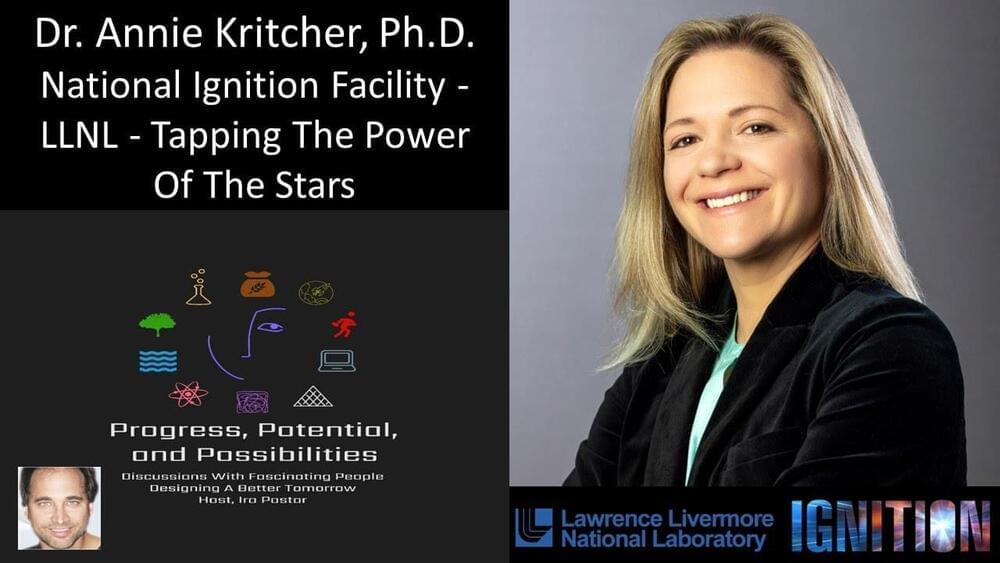Tapping The Power Of The Stars — Dr. Andrea Kritcher Ph.D., Lawrence Livermore National Laboratory, U.S. Department of Energy.
Dr. Andrea (Annie) Kritcher, Ph.D. is a nuclear engineer and physicist who works at the Lawrence Livermore National Laboratory (https://www.llnl.gov/). She is the design lead of the HYBRID-E capsule technology within Lawrence Livermore’s Inertial Confinement Fusion (ICF) program, and is a member of the ICF leadership team and lead designer for shot N210808, at their National Ignition Facility, a recent experiment that heralded a significant step towards a fusion break-even target. She was elected Fellow of the American Physical Society in 2022.
Dr. Kritcher was first employed at Lawrence Livermore as a summer intern in 2004, as an LLNL Lawrence Scholar during her time at UC Berkeley, where she earned a master’s degree and doctorate in nuclear engineering, and as a Lawrence postdoctoral fellow in 2009 following completion of her Ph.D. During her postdoctoral appointment she explored using X-rays to measure the properties of warm and hot dense matter (plasma), and measuring how nuclei interact with dense plasma.
In 2012, Dr. Kritcher became a member of scientific staff and now serves as team lead for integrated implosion modeling and is a group leader within the design physics division at LLNL.
Lawrence Livermore National Laboratory (LLNL) is a federally funded research and development center in Livermore, California, United States. Originally established in 1952, the laboratory now is sponsored by the United States Department of Energy. Its principal responsibility is ensuring the safety, security and reliability of the nation’s nuclear weapons through the application of advanced science, engineering, and technology. The laboratory also applies its special expertise and multidisciplinary capabilities towards preventing the proliferation and use of weapons of mass destruction, bolstering homeland security, and solving other nationally important problems, including energy and environmental needs, scientific research and outreach, and economic competitiveness.
